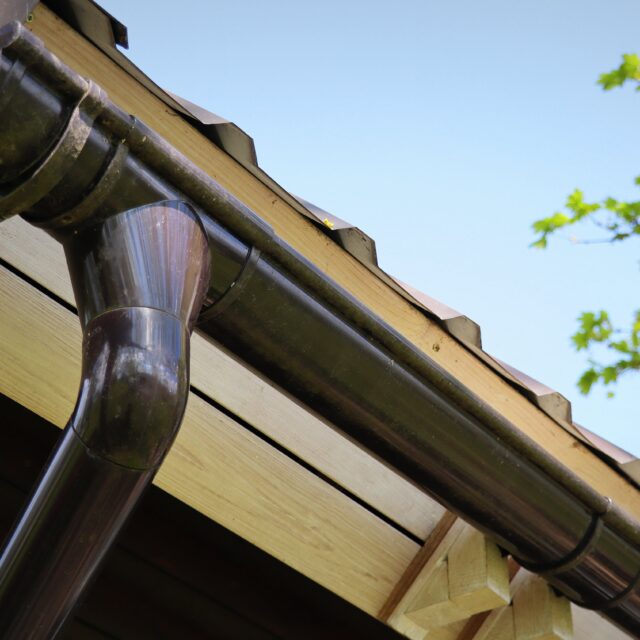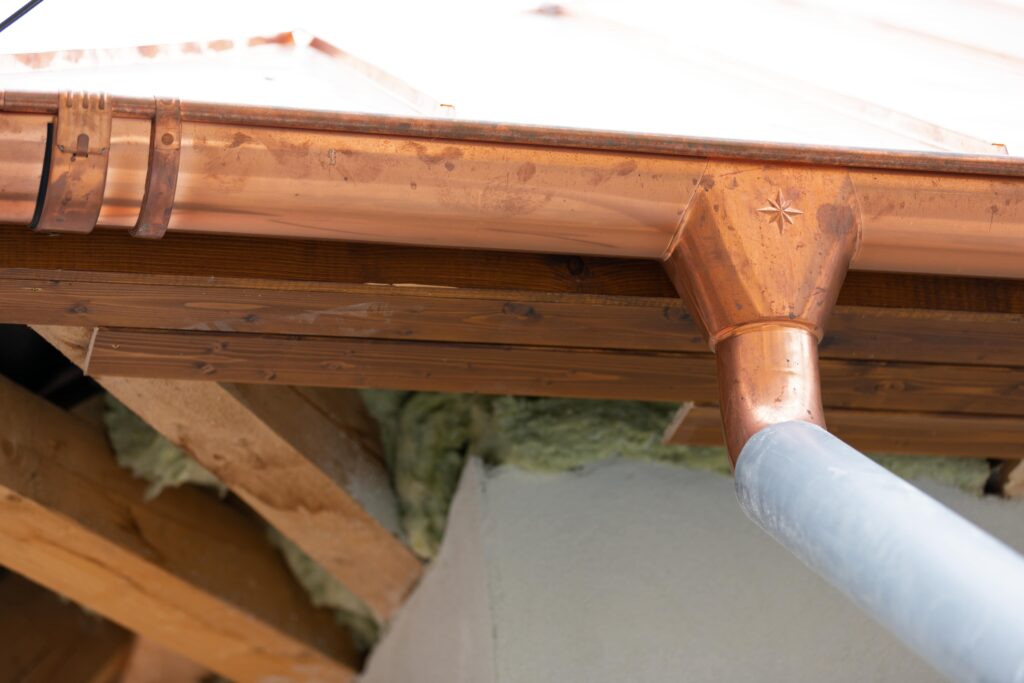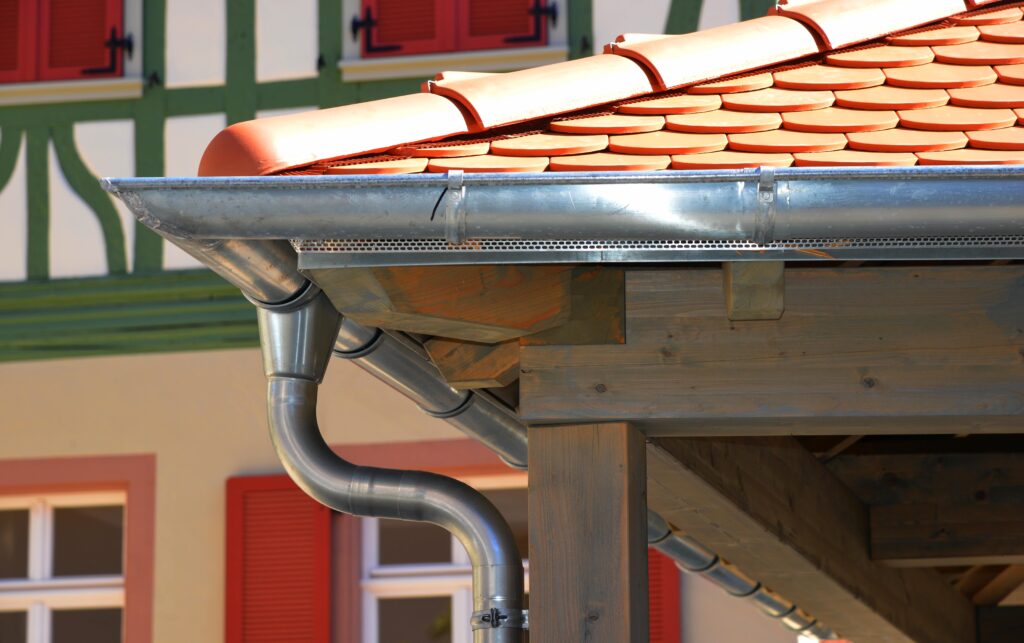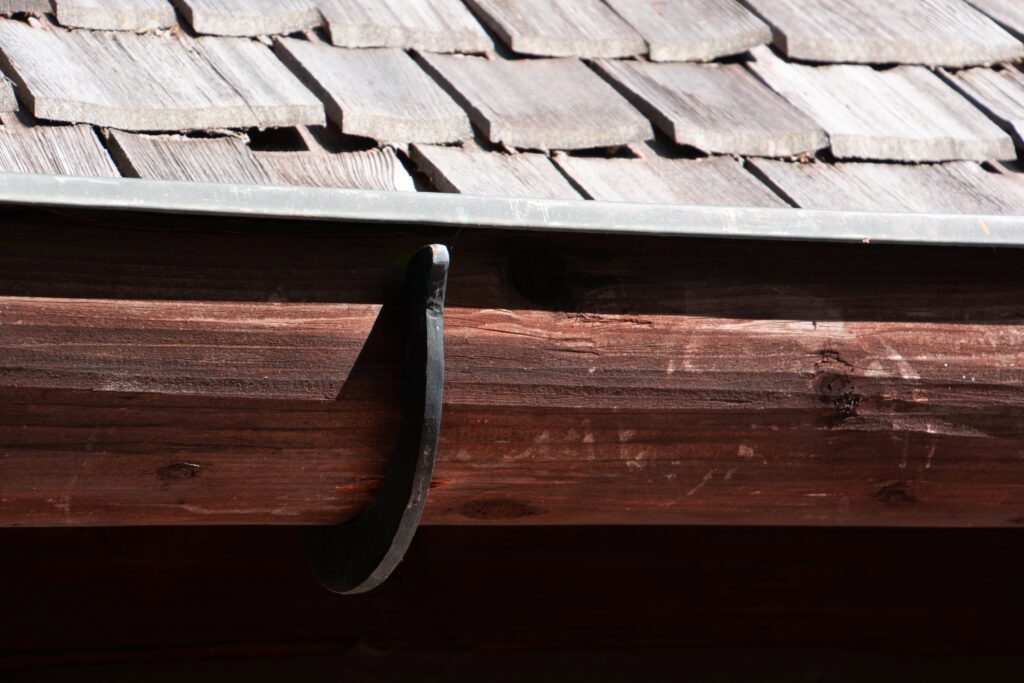Selecting the Right Materials For Your Project: Best Gutter Materials

- Written by: jlbmdev

Reliable gutters prevent water damage, foundation shifting, soil erosion, and mold, so you want to choose the best option for your home. Your decision might also be influenced by aesthetic choices and affordability. After you’ve chosen the best gutter style for your home, the next step is to select a material that fits your needs.
In the next installment of our Best Materials Series, we’ve created a best gutter materials guide to help you find long-lasting gutter options for your home.
Most homes have, and need, rain gutters. But does your home really need gutters? Are there situations where you won’t need to install them?
Water is unlikely to pool around your home’s foundation if it sits on an elevated space compared to the rest of the property. And if your home is constructed with a sharply peaked roof, with an overhang of 12 inches or more, rainwater will naturally cascade away from the house. In both of these cases, gutters are likely unnecessary for your home.
Rain gutters may also be optional if your house is surrounded by concrete, such as an outdoor kitchen, walkways, or driveways. Concrete serves as a protective layer between the runoff and the foundation.
However, if your house sits slightly lower than the surrounding ground, gutters are required to channel runoff a sufficient distance away from the foundation.
Or if your roof doesn’t have an overhang or only has a few inches of overhang, rainwater will likely pour onto your home’s foundation. This can result in damaged flower beds or flooded basements, and water can pour down on you as you come and go on a rainy day. If this describes your current situation, installing gutters is a highly recommended solution.
It may be time to replace your gutters if you’re noticing any of the following signs:
While gutters wear down over time, not all gutter damage warrants a full replacement. Sometimes it’s a quick repair, like replacing a bad seal, a sagging hanger, or a cracked gutter section. Or it could be time to replace them.
Need to replace your gutters?
Now, let’s take a look at the pros and cons of gutter materials to help you determine which one is right for your home.

The strength, durability, and rust resistance of copper gutters make them a go-to for many homeowners. In addition, copper is extremely strong and sturdy, allowing this type of gutter to better withstand debris and natural wear and tear. Properly maintained copper gutters can last generations and be a long-lasting gutter option, but only if they’re installed correctly.
Pros
Cons
There’s a reason aluminum is one of the most popular options for gutter materials. Rust-resistant and weatherproof, aluminum gutters are lightweight and durable.
Aluminum is also easy to paint over, meaning you can repaint it to match the color and aesthetic of your home. Aluminum gutters are a great option for homeowners looking for a high-quality gutter that blends in with the unique aesthetic of their home.
In ideal conditions and with proper care, aluminum gutters can last up to 20 years.
Pros
Cons

Steel gutters have been a popular choice among builders and homeowners for years. Steel gutters are typically more expensive than aluminum gutters, but their durability makes them a trustworthy choice for homeowners looking to reduce the amount of maintenance for their gutters.
There are several different types of coating materials available on the market to prevent rust, and painted steel gutters allow you to prioritize aesthetics without sacrificing strength and durability. Steel gutters can also be made from recycled materials, making them environmentally friendly.
Pros
Cons
Zinc gutters offer an alternative to copper since they share similar qualities. They’re corrosion-resistant and boast a lifespan of up to 50 years, thanks to a protective patina that naturally forms, eliminating the need for painting and enhancing their aesthetic appeal. This helps make them a durable option that comes at a slightly lower cost than copper.
However, similar to copper, the patina on zinc creates a protective layer against weathering, but zinc is more susceptible to damage from coastal air. Additionally, it’s not recommended to pair zinc gutters with wood-shake roofing, as the acidic runoff from the roofing material can cause damage to the zinc.
Pros
Cons

Mainly found in historic home restoration projects, wood gutters offer a unique, classic aesthetic, often crafted from cedar or redwood. However, they are typically the most expensive option and demand significant ongoing maintenance like staining, painting, and oiling to prevent rot and ensure a longer lifespan.
Pros
Cons
With all the products on the market, is there a long-lasting gutter option? Like our other materials recommendations, it depends on you. If you’re someone who doesn’t mind some maintenance, then steel or aluminum gutters might be the right choice for you. Or if you’re willing to increase your budget, you might choose copper or steel over vinyl.
Doing your research, doing a gutter material comparison, and creating a budget will help you choose the best gutter materials for your home. So we created a chart to help get your research started.
| Type | Cost | Durability | Maintenance |
|---|---|---|---|
| Copper | $$$ | 50-100 years | Low |
| Aluminum | $ | 20-30 years | Medium |
| Steel | $$ | 15-20 years | Medium |
| Zinc | $$$ | 50-80 years | Low |
| Wood | $$$ | 25-50 years | High |
Clean and weather-resistant gutters help prevent water damage. They channel rainwater away from your home and prevent expensive repairs to your foundation. Proper gutter maintenance is key to making sure that your home remains protected from water damage.
Gutters should be cleaned at least twice a year, once in the spring and again in the fall. If you live in an area prone to heavy rainfall or have overhanging trees on your property, you might need to clean them more often. Debris like leaves, twigs, and dirt can clog your gutters, which can lead to overflow and water damage.
As you’re cleaning, inspect your gutters for cracks, rust spots, or any signs of wear and tear. Make sure you pay close attention to the seams and joints since these areas are more likely to develop leaks. If you can catch these small issues before they become big problems, you can prevent expensive repairs in the future.
Another area to check is your downspouts. They should be clear, and water flows away from your foundation. If there’s water pooling near your home, it’s time to adjust the gutter slope or add extensions to your downspouts.
Gutter guards can help reduce the amount of debris that gets into your gutters, which can minimize the need for frequent cleaning. There are various types available, such as mesh screens and foam inserts, that fit different gutter styles and budgets. However, some styles can cause debris to pile up and cause clogs on topof the guard instead of inside the gutter, so you’ll still want to check periodically.
Over time, gutters can start sagging due to the weight of debris or improper installation. Check to make sure your gutters are securely fastened to the fascia boards and that they maintain a proper slope for efficient drainage.
When you do your seasonal maintenance, add gutters to your list. In the winter, check for ice dams that can form and block water flow, leading to roof damage. In warmer months, ensure that the gutters are free of pollen, dirt, and other small particles that can accumulate.

Like any major home remodeling or renovation project, installing durable gutter materials correctly should be done by a licensed and professional contractor. To find trusted and experienced contractors, visit our Find a Contractor page and get started.
From seamless gutters to advice about the best gutter materials, J&L is here to help you with your remodeling project. Contact us today and tell us what you’re looking for.